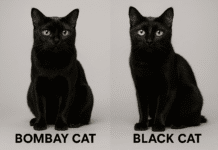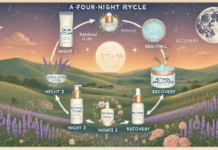Last Updated on February 25, 2023 by
Color contacts; not only are they pretty to look at, but they are a great way for consumers to change up their eye color. Color contacts can be used as an accessory to makeup, paired with an outfit, or just overall change one’s appearance. Sometimes when purchasing, consumers aren’t fully informed about the colored contacts, so below, we’ve gathered everything you should know before purchasing.
Table of Contents
Prescription Needed
As surprising as it may be, consumers may need prescriptions to purchase contact lenses in some countries; it doesn’t matter whether they are for prescription or cosmetic reasons, a prescription from an optometrist is needed.
In countries like the U.S., they cannot be sold legally without a prescription. The reason for this is that some of the contact lenses available don’t meet safety standards, and they have the potential to do long-term damage to your eyes.
So, regardless of your reason for wearing colored contact lenses, whether it be to spice up your Halloween costume, you may need to set an appointment with an optometrist who can recommend lenses to you and answer any questions you may have. Look up the rules for your country.
Types of Colored Contact Tints
One thing that consumers may not know is that there are different types of colored contact tints, and each type has its own functions.
Visibility
Colored contact lenses with visibility tint do not alter the color of your eyes; instead, they make the contact lens easier to see. Most contacts are translucent, which makes them easy to misplace and lose. When you drop one, the likelihood of you finding it again is slim. Visibility tints tend to be green or blue and are applied to one side of the contact. Once on the eye, the tint is not visible.
Enhancement
Lenses that have the enhancement tint are subtle, and they also don’t change the color of the eye. Instead, enhancement tense will intensify the eye color by mimicking your eye’s natural details.
Opaque
Opaque tints are not transparent and contain solid colors. For those who want to either change the color of their eyes or change the shading of their eyes, opaque tints are ideal. There are a variety of different tints available for opaque lenses, like:
- Gray
- Blue
- Green
- Violet
- Hazel
- White
- Pink
- Red
- Deep Purple
These are not all the colors; there is a spectrum of colors available for opaque lenses on the market for consumers.
Blending
Blending tints combine both opaque and transparent tense; contact lenses with these tints are transparent on the outside and, towards the middle, grow more opaque. The purpose is for the new eye color to have a more natural look.
Custom
Wearers can also have their color contacts custom-made. Custom tint lenses are specifically designed for individuals to suit their natural eye color. These tints are commonly used by those with eye imperfections who want a natural-looking iris or pupil. Other tints, referred to as sports tints, can help benefit individuals like athletes by minimizing glare and improving depth perception.
They Cost More
Colored contact lenses are cosmetic, and they cost more than regular lenses. This is because they require extra craftsmanship; work has to go into the tint and shades to make the lenses look natural and add to the appearance of the eye in a pleasing way. Still, it is a good investment if you’re looking to change your eye color.
Require Same Care
Colored contact lenses require the same care as prescription contact lenses. When cleaning color contact lenses, it’s crucial to do the following:
- Wash your hands beforehand. Dirt and bacteria are everywhere, especially on our hands. Avoid scented and moisturizing soaps and thoroughly dry your hands.
- Remove the lenses one by one and clean them with the contact solution. This reduces any buildup and debris that may be on the lens. It’s recommended to rub the lens in the palm of the hand with the solution.
- Rubbing the lens should have loosened debris, so rinse the lens once more in the solution.
- Place the lens in a clean lens case. Make sure you clean out the old solution beforehand, as it can carry extra debris and microorganisms.
Keeping the lens of your color contacts clean can help them last. Unless they are designed to be worn overnight, never wear the lenses for longer than a day because they can cause irritation or disturbances in your vision.
Don’t share contact lenses with anyone; this may be a no-brainer, but there are individuals who do share their color contact lenses. This can share harmful bacteria, which can result in eye infections. Not only that, but it’s never a good idea to wear colored contacts that were not made for you; if they don’t fit properly, the lenses can irritate and scratch the corneas.
Still, don’t let all of this information scare you away from color contact lenses. They can be a fun and unique way to switch up your style. The best color contact lenses are going to be comfortable and make you fall in love with the color.
Apart from that if you want to know about Common Contact Lens Problems And Their Solutions then please visit our Featured page













